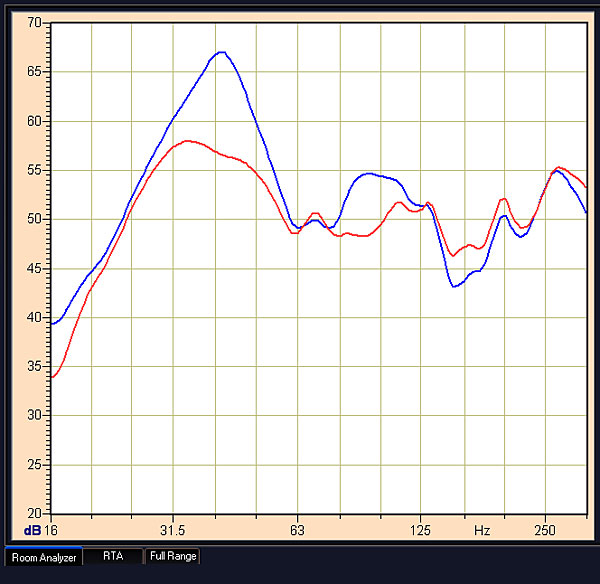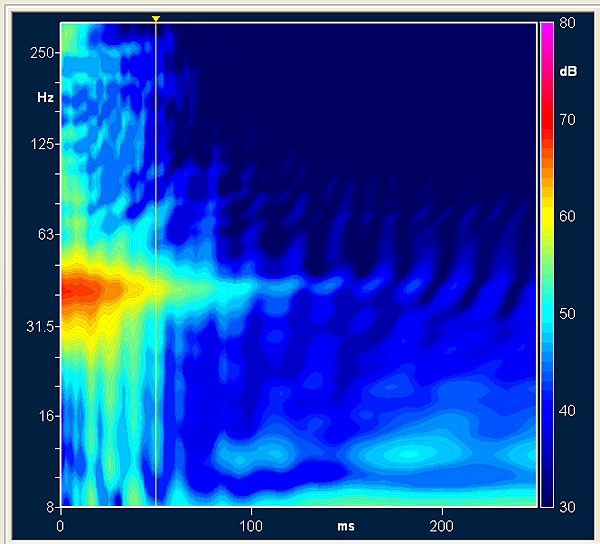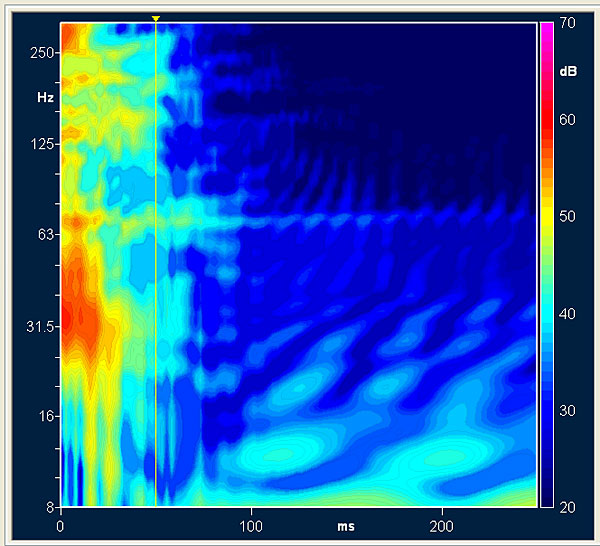| Columns Retired Columns & Blogs |
The Rotel looks like excellent value. Any chance you'll be looking at the higher end of the pre/pro spectrum, such as the Levinson or Theta?
No, they're not the same
While the Classé SSP-800 lets the user vary the frequency, Q, and gain of each of its five filters over the entire audioband, these settings can also be made for all five filters at once for the critical range below 300Hz. The RSP-1572 has 10 filters, each variable in Q and gain and adjustable in increments of 1Hz, but each restricted to a set range of frequencies. However, four of the Rotel's filter ranges overlap below 140Hz, allowing the user to correct most modes in most rooms. Since neither the Classé nor the Rotel (nor any of the other pre-pros mentioned in the preceding paragraph) offers any measurement facilities for their manual EQs, the user must buy and learn to use an acoustical measurement system. For its simplicity and usefulness in generating mode correction filters, I used XTZ's Room Analyzer with the Rotel, as I had with the Classé.
One problem with this was that the XTZ's output is analog mono and the Rotel, like many modern pre-pros, will not digitize its multichannel analog input; I couldn't easily equalize the in-room response of each channel in turn. I began, instead, by connecting the XTZ to the Rotel's CD stereo analog input and EQing the left and right main channels with bass management defeated, so that they ran full range. For example, the XTZ detected a room mode in the output of the front left speaker (fig.1, blue trace and fig.2) and suggested a filter with frequency of 41Hz, a Q of 8.9, and gain of –9dB. Since neither XTZ nor Rotel specifies how they define Q, I began with the suggested numbers, then tweaked the value of Q by observing the filter's effect. Even with the initial setting, the extended modal decay at 41Hz was eliminated (fig.3).



I then dug in and fiddled with further filters at 70, 92, and 162Hz, based on the results shown by XTZ. This was done by creating a filter in the Rotel that was the visual inverse of each major response deviation shown by XTZ, especially those that also called themselves out in the time-decay plot. As a result, I got a much smoother overall response, marred only by small bump at 260Hz (fig.1, red trace). Since the Rotel offers no filtering from 200 to 1110Hz, I had to live with this bump (see sidebar, "Rotel RSP-1572: 10 Parametric Filters").
The right front speaker's output didn't seem to be exciting a room mode, perhaps because it sits close to an open doorway, while the left front speaker is a similar distance from a room corner. Still, the response showed peaks at 37 and 57Hz, and a broad but shallow trough at 85Hz. All of these were minimized with a bit of adjustment of filters. I then played some two-channel music and was amazed to hear how clean it sounded compared to the un-EQ'd state. There is no doubt that the Rotel's filter set, while not perfect, is entirely adequate and effective.
But there's more. First, I wrote down the filter parameters for the L and R speakers, and unplugged the main amp from the RSP-1572's L and R outputs. Then, in order, I connected the amp channels driving the center and surround L and R speakers, each time optimizing the filters, writing them down, and resetting them before running the next speaker. I also connected the two subs to those outputs and EQ'd them as a pair, because the two subwoofer outputs are internally connected to a single processing channel. Finally, I reconnected everything back the way it should be, re-entered the appropriate EQ filters for each channel, and restored the Rotel's bass management. Whew!
Yes, the Rotel's EQ worked very well
Overall, it took me about two hours to do all that. Bottom line: In every way, the results rewarded the effort invested. Although the procedure seems tedious, this EQ effectively dealt with the major effects of my system in my room. I didn't need to bother with corrections above 200Hz, but in a room not already treated with traps and acoustical panels, it would be easy to invoke additional filters in the midrange and treble. Yes, most auto-EQ systems will do the job in one-tenth that time—but there are mitigating circumstances. First, unless you change or rearrange your speakers, you need do this only once. Second, you get a real hands-on experience that involves you in a careful consideration of the factors that contribute to your system's overall sound. For example, in dealing with the subwoofer(s), you should experiment with repositioning it to smooth its in-room response before you apply any electronic corrections.
Now I could delve into my record collection and enjoy music uncorrupted by room modes. Now I could appreciate the Rotel RSP-1572 as a great-sounding pre-pro. I used it with familiar and new CDs, SACDs, and Blu-ray discs via the Oppo and Yamaha players. Sure, I tried it with six analog cables from the Oppo, but compared with the felicities of the room EQ accessible via the Rotel's HDMI input, it just wasn't fair. The sound was very far from bad, but the bumpy bass and detectable subwoofer transitions didn't honor the inherent qualities of the sources or the Rotel.
Like many pre-pros, the RSP-1572 doesn't decode DSD, but with the Oppo transcoding SACDs to 88.2kHz PCM, it was comparable to the sound I got from the Anthem MRX700 and Integra pre-pros. Although the RSP-1572 is supposed to accept sample rates of up to 192kHz, I ran into a problem with the Yamaha's 176.4kHz multichannel output, which muted the Rotel's output unless I switched to two-channel. However, the RSP-1572 had no problems with 192kHz, 5.1-channel dts MA signals from 2L Blu-rays, but again muted if the player transcoded these to multichannel PCM. When I reported this to Rotel, they swiftly responded with a firmware update that, they say, is now installed in all RSP-1572s. I installed it. It worked.
So how did the Rotel RSP-1572 stack up against its competition in the busy $2000 class? It sounded as good as any, and was completely devoid of operational idiosyncrasies or switching noises. It distinguished itself with the delightful simplicity of its operation, which doesn't try to entice the user into meddling with processing controls but still provides all the facilities the user needs. What it lacks is any Internet access or streaming facilities, although the USB port accepts iPods, MP3 players, flash drives, and a conveniently provided Bluetooth dongle. It also lacks automatic room EQ, and some users will have to hire a professional installer to set up its capable parametric EQ. All that suggests to me that the Rotel is a more formidable competitor in the custom-installation sector than in the audiophile/home-theater hobbyist market. On the other hand, those of us who don't mind getting our hands dirty with some measurement tools can have it all with the RSP-1572: great sound and great looks.

The Rotel looks like excellent value. Any chance you'll be looking at the higher end of the pre/pro spectrum, such as the Levinson or Theta?

The ML is old but the Theta is a possibility.
Kal